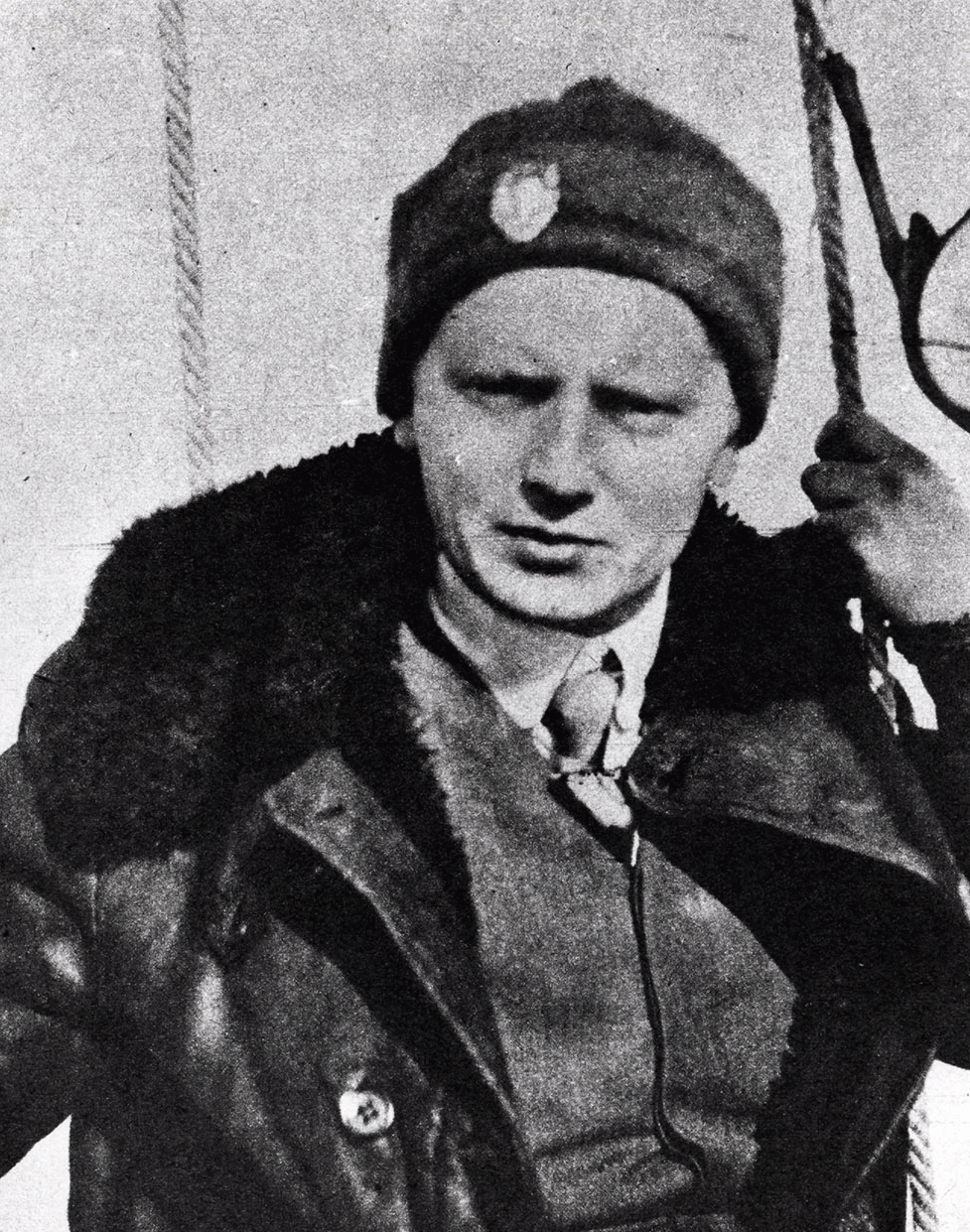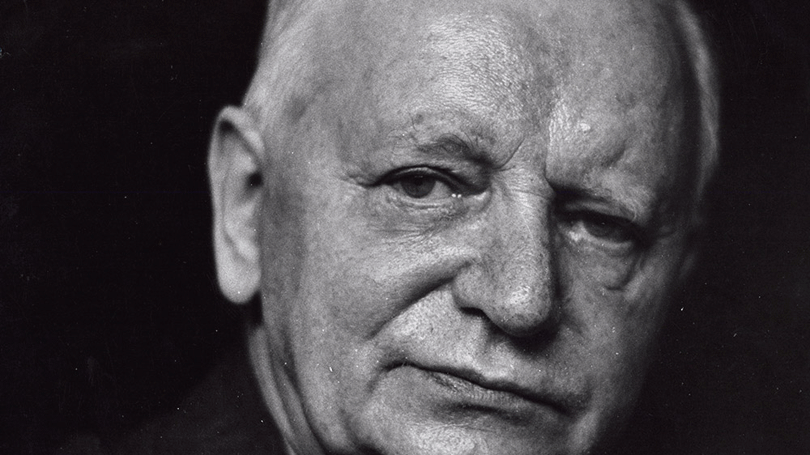
Carl Theodor Dreyer was born out of wedlock to a Swedish housekeeper, Josefina Nilsson (1855-1891), who gave him up for adoption immediately after. The first year and a half of his life was turbulent, but the little boy finally found a home with the Dreyer family and was named Carl Theodor after his adoptive father. Dreyer’s birth mother died not long after his eventual adoption. Several film scholars have interpreted Dreyer’s frequent depictions of tragic women as an autobiographical element in his films.
Dreyer began his career as a reporter, specialising in aviation early on, in 1910-1913. Himself an active balloonist, he got a balloonist’s certificate in November 1911. Alongside his journalism, he wrote screenplays. His first realised script was Bryggerens Datter (Dagmar) (Rasmus Ottesen, 1912), produced by Det Skandinavisk-russiske Handelshus. In 1913-1918, he worked as a script consultant and writer at Nordisk Film, where he also made his directorial debut with The President (1919). In 1920-1930, Dreyer directed seven features, mainly abroad – five were foreign productions: one Swedish, two German, one Norwegian and one French. From 1926 to around 1931, Dreyer lived with his family in Paris, where he made his best known film, his masterpiece The Passion of Joan of Arc (France, 1928).
When his first sound film, Vampire (France/Germany, 1932), flopped at the box office, a burdened Dreyer, succumbing to stress and a troubled personal life, eventually admitted himself to a clinic in Paris. In extension of his stay in Paris, he got an assignment in 1934 to direct a film to be shot on location in Somalia. Dreyer also wrote the script for the film, L’Homme ensablé ("The Man in the Sand"), but after roughly two months of filming he was forced to return to Copenhagen, sick with malaria.

Up through the 1930s there was no demand for a filmmaker of Dreyer’s calibre on the domestic scene, where musicals and other comedies reigned. In 1936, he returned to his old trade, journalism. Over the next five to six years, he wrote chatty reports on life in the city court for the B.T. newspaper under the heading of Livet i Byretten (Life at the City Court). With a family to support, this was his bread and butter.
Finally, in 1942, Dreyer got a chance to direct the short documentary Good Mothers for Nordisk Film, co-produced by the government film office Dansk Kulturfilm and Mogens Skot-Hansen. The film was his chance to prove that he could stick to a budget and a production plan. The following year he got Palladium to produce Day of Wrath (1943), a film about a young parson’s wife, Anne, who falls in love with her stepson, who is her age, and is later accused of causing her husband’s death by witchcraft. The film is a central work for Dreyer, though he once again failed to please the critics.
Shortly after the premiere of Day of Wrath, Dreyer left for Sweden, where he directed Two People (Sweden, 1945). This chamber-play film was an all-around failure and Dreyer later sought to have it stricken from his filmography.
Back in Copenhagen after the Liberation, Dreyer renewed his contact with Dansk Kulturfilm and the Ministerial Film Committee. Documentaries had seen a big upswing during the years of Occupation and a lot of films were going into production. Soon, Dreyer was a regular employee of Dansk Kulturfilm. Labouring in the service of short films for close to a decade, he directed seven films, scripted or came up with the idea for four other films and treated one.
In 1952, Dreyer was awarded the license to operate the Dagmar Teatret cinema in Copenhagen, which secured him a reasonable financial foundation and enabled him to work on his lifelong project on the side – a film about Jesus of Nazareth. The idea for the film had first emerged in the early 1930s and he continued to have faith in the potential of realising it, working intensely on the preparations for it until his death. He had a suitcase packed and ready at home in his apartment on Dalgas Boulevard, in Frederiksberg, and was set to leave for Israel on a moment’s notice.
His last two features, The Word (1955), after a play by Kaj Munk, and Gertrud(1964), after a novel by Hjalmar Söderberg, were Palladium productions, as Day of Wrath had been. Palladium had repeatedly been warned by the Ministry of Justice to raise the quality of its film production or risk losing its so-called production license that enabled the company to operate a cinema alongside its film production. Dreyer’s film was the perfect foil.
The Word was the first time Dreyer had a film unanimously proclaimed a "masterpiece" by Danish critics. Internationally, the film was a big hit as well, winning the Golden Lion for best feature at the 1955 Venice Film Festival and an American Golden Globe for best foreign film the following year. The film triggered lively debate in the Danish press, because of its theme and, not least, because of Dreyer’s rendition of a religious miracle.
Gertrud, which would be Dreyer’s last film, had its world premiere in Paris just before Christmas 1964, begetting an instant scandal. The screening was a disaster and the critics, with very few exceptions, panned the film – including the Danish critics in the audience who filed reports home on the painfully embarrassing event. The film opened in Denmark two weeks later and, even though the Paris debacle had taken some of the sting out of the virulently negative criticism, there were few bright spots in the film’s reception. On the other hand, Gertrud did provoke fierce debate in newspapers and magazines, with defences of Dreyer, counter-responses and other articles – even a self-published edition of a long letter to the editor, which had not been accepted by the papers. Quite a few people, especially women, reported that the film was a powerful experience and made a strong impression on them.
Dreyer died on 20 March 1968, at age 79. He left behind his wife and two children and a body of work that continues to fascinate scholars and film buffs alike.
By Lisbeth Richter Larsen | 11. august
